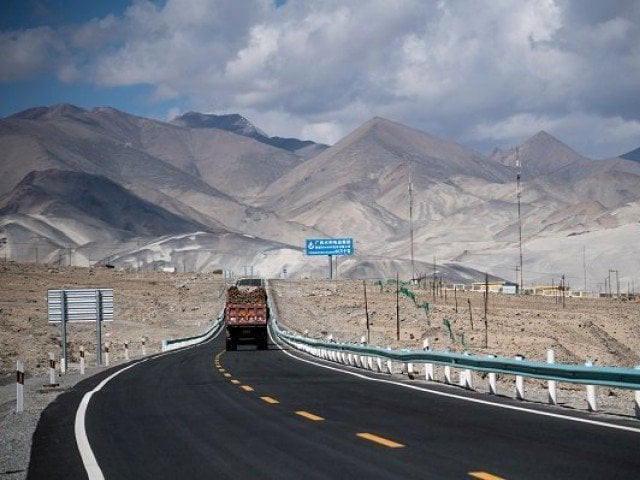CPEC and the US-China tug of war
US-China decoupling has hardly benefitted Pakistan, which has been battling with its own challenges

PHOTO: REUTERS/FILE
Alice Wells, the lead US diplomat for South Asia, criticised CPEC for what she called creating a debt burden for Pakistan, disproportionately benefitting Chinese state-owned enterprises. She specifically mentioned the ‘expensive’ price tag of the planned ML-1 upgradation and lashed out at the lack of transparency in the project. She also claimed that the US approach of promoting FDI and trade offered a ‘better’ alternative to the Chinese model of investment through state-run companies.
Ms Wells’ statement is a part of Washington’s recently evolving aggressive stance towards the Belt and Road Initiative (BRI) as it intensifies its efforts to shoo away the world from easier capital flows from China. Last month, US Commerce Secretary Wilbur Ross mentioned exorbitant profits made by Chinese SOEs, leading to foreclosures, while US Vice President Mike Pence aired his concerns about the “flag of Chinese ownership flying in ports from Sri Lanka to Pakistan to Greece”. Pence also openly expressed his gratitude towards Iceland, while visiting the country in September, for ‘rejecting’ China’s BRI investment.
This hardline US stance has come in the wake of the US-China trade war and stifling relations between the two superpowers. While the jury is out on the future of Sino-US relations, some claim that this polarisation is in fact helping BRI’s cause. In a blog post, Benn Steil and Benjamin Della Rocca highlighted that Trump’s tariffs have resulted in a surplus trade balance with China for many countries, with African and Latin American BRI partners being the biggest winners.
But the US-China decoupling has hardly benefitted Pakistan, which has been battling with its own challenges. Since Imran Khan came to power, CPEC has hit a snag owing to a balance of payment crisis, fiscal crunch and prevalent bureaucratic indecision. Resultantly the new CPEC investments dried up while the old ones suffered from slow progress.
However, the establishment of the CPEC Authority and renewed conversations in the 9th JCC meeting rekindled the prospects for CPEC’s revival. Many also believe that with a former general in charge of the autonomous CPEC Authority, the government may be able to overcome bureaucratic inaction widely attributed to the NAB’s accountability drive.
During the JCC meeting, the two sides agreed to speed up the preliminary design work on ML-1, approve the project and finalise the bidding documents. And while the question of its financing remains in limbo, given the IMF’s embargo on government guarantees, China agreed to establish a high-level financing committee which would consider RMB financing besides other options.
But notwithstanding Pakistan’s shifting-gear approach towards CPEC, the increasing polarisation between Washington and Beijing is going to pose difficulties for Islamabad which is already struggling to fulfil IMF’s conditions and making its case to get out of the FATF grey list. For Pakistan, on the one hand is the country’s largest trading partner which also holds significant influence with global lenders and the FATF; and on the other is its time-tested ally which has pumped in billions of dollars to help the country overcome its energy crisis and improve connectivity.
For Pakistan it’s not an either-or situation. The promised FDI and trade prospects from the US are no substitute for readily available infrastructure financing from China or vice versa. This means that Pakistan will have to draw a balancing act. But more importantly, it will also need to negotiate better terms for future CPEC projects, ideally circumventing the need for sovereign government guarantees and ensuring manageable repayment options. Or else the government will soon find itself in a very tight spot.
Published in The Express Tribune, November 26th, 2019.
Like Opinion & Editorial on Facebook, follow @ETOpEd on Twitter to receive all updates on all our daily pieces.
















COMMENTS
Comments are moderated and generally will be posted if they are on-topic and not abusive.
For more information, please see our Comments FAQ